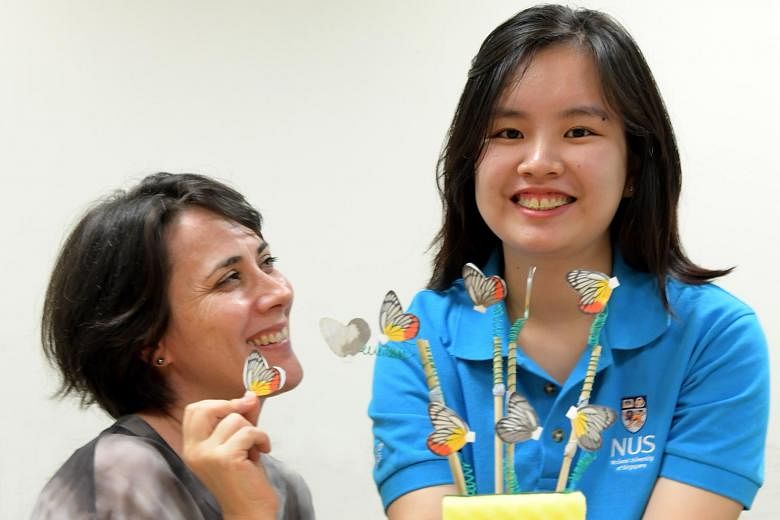Researchers in Singapore studying the painted jezebel, a common butterfly here, have found that the red and yellow colours on its wings act as warning signals to predators.
And what is surprising is that red is a novel colour introduced more recently in the butterfly's lineage, appearing on the painted jezebel's upper side five to six million years ago and on its underside about 22 million years ago. The butterfly is among about 200 species from the Delias genus, one of the largest butterfly genera which came about roughly 31 million years ago.
National University of Singapore (NUS) PhD student Jocelyn Wee, 24, conducted the study using 300 butterfly models in different colour permutations. They were created using filter paper and colour pencils.
She placed the models in the undergrowth of three sites in Tampines, Jurong and Kent Ridge, and found that while both red and yellow warded off predators such as birds and insects, red appeared to be more effective.
On average, fewer than three of the models with red wings were attacked, compared with around four of the yellow models.
When Ms Wee went on to map out 138 species from the Delias genus onto a family tree, she found that the older lineage had only the colour yellow on their wings.
"We hypothesised that perhaps red is more effective - hence when the first butterfly with red on its wings came about, red very quickly became a prominent feature on the wing surface in later species," said Ms Wee, who had done the study as a final-year project last year during her undergraduate studies.
A paper on the one-year study was published in scientific journal Plos One early this year.

Ms Wee said she had chosen to study the painted jezebel after reading that it is aposematic, which means that it has colours or markings to ward off predators.
"When I saw this, I was very curious and made searches online to find papers which have made such conclusions. Then I realised nobody has done anything on this butterfly even though it is part of one of the largest butterfly genera in the world," she said.
She said her study's results show that predation was an important driving force in the evolution of the colours on the wings of the butterfly species in the Delias genus.
Her supervisor, Associate Professor Antonia Monteiro, who is from the NUS Department of Biological Sciences, said the next step would be to find out what genetic modifications had to take place to produce the novel red pigment.
She noted: "Whether the world is interested in knowing how natural pigments are formed, rather than using synthetic materials to form pigments, is a different question altogether.
"But I would say yes, because natural pigments are usually biodegradable and they have a variety of interesting features."

